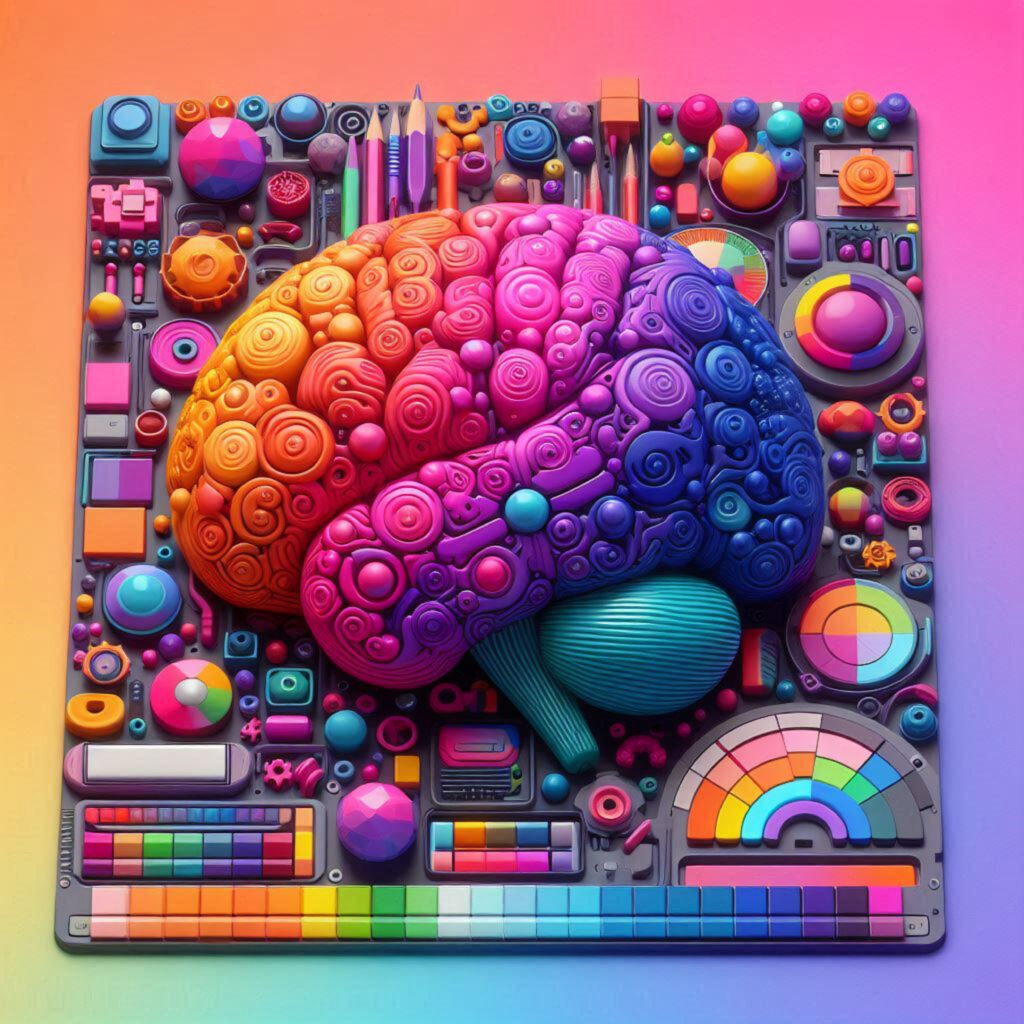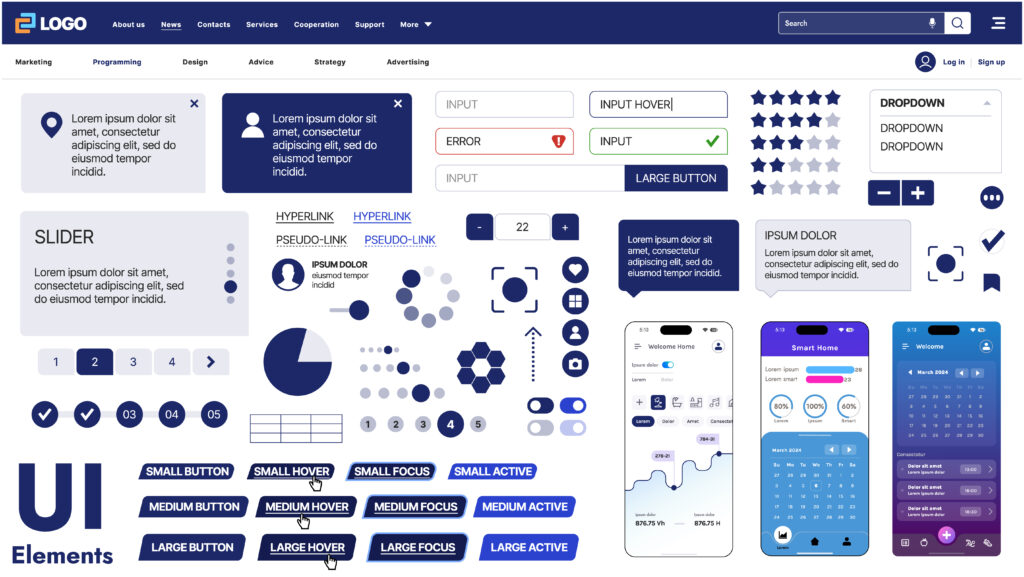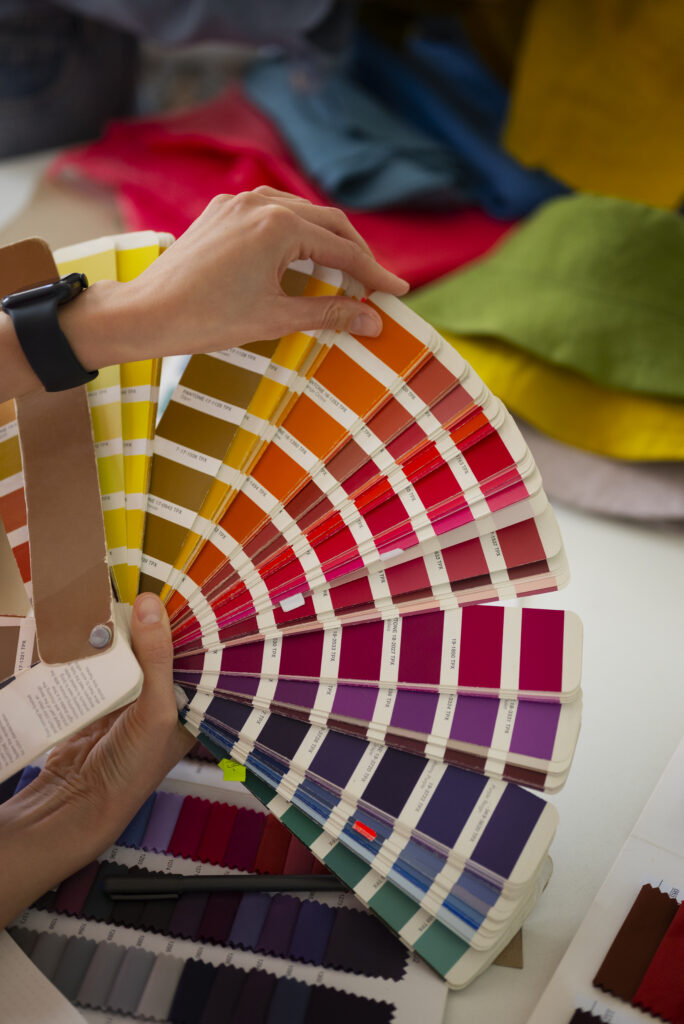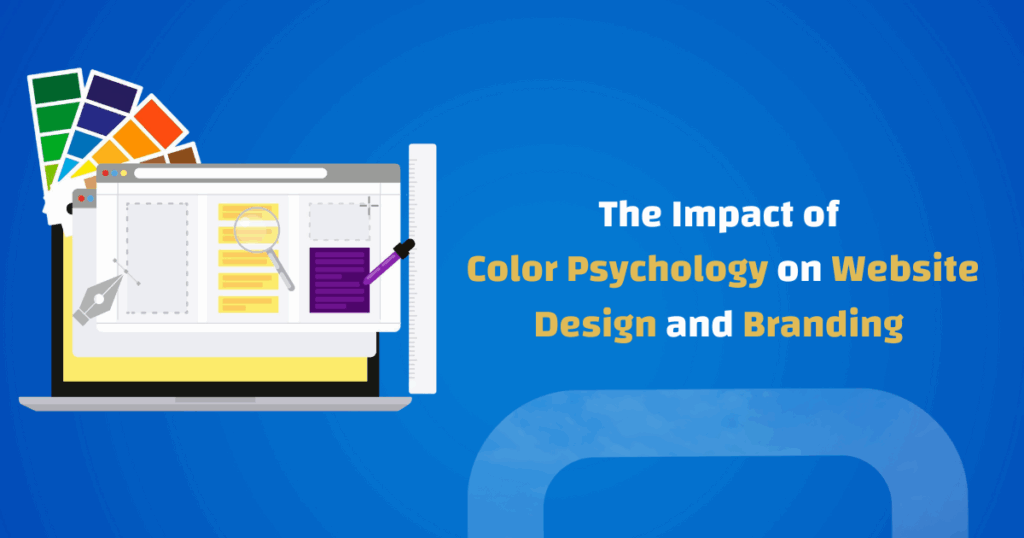Table of Contents
We live in a dynamic world where attention spans keep getting shorter and shorter! Competition is fierce, and every element of a website should be carefully crafted to drive action and leave an impression. But have you ever wondered which element of a website has a great effect on your users’ psychology?
Well, one of the most powerful elements of a website is color, which not only affects the look and feel of a website, but most importantly it affects the audience’s psychology and behavior.
Case Study: Hubspot‘s Button Color A/B Test: Red Beats Green:
In traffic signs, red means stop and green means go, but do you think this is applicable in the digital world?
Well, Hubspot decided to do an A/B test on their CTA button and find which color gets a higher conversion rate.
But why red and green specific? Hubspot decided to test these 2 colors as green is related to environment and nature and its use in traffic lights as a sign to “go” and move forward, while red shows excitement, passion and warning but it’s used on traffic lights as a sign to stop. So which color do you think will win?
Hubspot’s home page already had a green CTA button, so they started their test by cloning that page, but the only thing that they changed was the button color to red. Everything else on the page was exactly the same (the content, messages, and graphics).
They ran the test for several days and had 2,000 visits to their page, using analytics tools they found that the red button got 21% more conversions than the green one. Although they thought green aligns with the color theme! See what a simple color change can do!
In this article we’ll tell you some tips and tricks to help you choose the right colors for your website that will help you evoke your users’ emotions and get the results that you desire.
Understanding Color Psychology In Web Design

Before we jump into the tips and tricks of color psychology, first we need to explain color psychology in web design.
In UX designs, colors are used to create a specific atmosphere for the website, convey message,s and influence your users’ behavior. For example, blue gives a feeling of calmness and trust, while red is associated with excitement and urgency.
Each color has its own unique effect, so by understanding how colors impact users, designers can use them strategically to evoke specific emotions, enhance customers’ engagement, build a particular brand identity, and increase conversion.
The use of color guides the user’s attention to certain areas of the website, so colors must be carefully used across different elements of the website, such as headlines, pop-ups, and CTAs to help you improve your website performance and drive more conversions, just like the case study that we mentioned earlier. We’ll give you a general guide for the optimum colors that can be used in each element of the website, but first, let’s talk about testing and optimizing your website colors.
Never Stop Testing And Optimizing Your Website Colors:
Optimization is key when it comes to UX design. Optimize the colors that you use based on your goals, metrics, and the users that you’re targeting.
You can use A/B testing, heatmaps or even surveys to see which color combinations get you the best outcome and make your website more attractive and functional to your users.
Just like Hubspot’s Button Color A/B Test, A/B testing helps developers compare the results of two different versions of the same design to find which one achieves higher results.
To do an A/B test, first you need to define the metrics you want to measure. For example, In our case study, their goal was to find which button color achieves a higher conversion rate.
Whether you want to test CTA color, text color, or even notification color, don’t forget to test one variable at a time to be able to measure the results of that color change accurately.
It’s also crucial to run the A/B Test for the same target audience to get accurate results. We recommend dividing your target audience into 2 random groups and testing one version on one group and the other version on the other group.
It is very important to let the test run for enough time, 2 weeks would be optimum for an A/B test, to ensure you had measurable results that you can easily measure. After the testing phase is over, make sure you analyze the results based on the primary metrics that you set and see which version got more results, such as the red button in our case study.
There are so many tools that you can use for A/B testing such as: Optimizely, Crazy Egg and AB Tasty.
Strategically testing color psychology in your web design helps you gain valuable insights on how colors affect your users’ behaviors, this will help you create more engaging and effective browsing experience and drive more conversions.
Color Use In Website Elements:

Now it’s time to understand more about how you can use color psychology in your website design and which colors to use in each element of the website to help you influence users’ perception and behavior which will increase your conversion rates.
- Text color: Contrast between the text color and the background is a must to ensure your website usability, aim for using a dark color for text on a light background or vice versa.
- Background: Choose a light or neutral color to provide a clean design and make your website more readable. Use white, light gray, beige, or a pale shade of any other color.
- Button color: Using hot and attractive colors is vital for CTA buttons to evoke the desired actions, use accent colors such as red, orange or hot shades of green or blue.
- Link color: Hyperlinks must be different from regular text, use blue as it is the common color used for links.
- Error/ warning color: Use a hot color to grab your users’ attention and help them identify the problems.
- Navigation color: The color used in elements such as menus and navigation bars should be distinguished from the background and regular text. Use different shades of gray or any color that aligns with the brand colors.
Choosing which color to use in each element is not as easy as it sounds, as it is affected by who your target audience really is. Which gender you are targeting can heavily affect your color choice.
Studies show that women are more attracted to blue, purple and green, but dislike orange, brown and gray. While men like black, blue and green and dislike green, brown and pink. We advise you to always keep your target audience in mind and imagine how they’ll perceive your website when you start picking your website colors.
Picking The Best Color For Your Business:

Studies show that up to 90% of initial impressions for any brand are based on color, so picking the colors of your business website is crucial to help you drive more traffic.
Picking the optimum color for your business heavily depends on the type of service that you provide or the products that you sell. Remember that the use of colors depends on cultural differences and your target audience, but we’re here to give you a general guideline for common colors that you can use for various business categories:
Technology/IT:
- Blue: Symbolizes trust, reliability, and professionalism, often used by tech companies such as IBM and Microsoft.
- Green: Represents growth, innovation, and harmony, it is best used for eco-friendly or tech businesses such as Spotify.
- White: Associated with simplicity, clarity, and modernity, often used for minimalist tech brands such as Apple.
Finance/Consulting:
- Green: Symbolizes prosperity, stability, and financial growth, often used by financial institutions, such as: TD Bank.
- Navy Blue: Implies security, trustworthiness, and authority, suitable for consulting firms and banks, such as: PayPal.
Healthcare/Medical:
- Blue: Represents trust, tranquility, and dependability, commonly used in healthcare branding, such as Pfizer and Mayo Clinic
- White: Symbolizes cleanliness, purity, and sterility, often used in medical settings, such as: Johnson & Johnson.
Food & Beverage:
- Red: Stimulates appetite, energy, and excitement, often used by fast-food chains or restaurants, such as DoorDash and HotPepper
- Brown: Represents earthiness, warmth, and comfort, suitable for artisanal food brands or coffee shops, such as The Coffee Bean And Tea Leaf.
- Green: Associated with freshness, health, and natural ingredients, often used in organic food branding, such as Starbucks.
Fashion/Retail:
- Black: Symbolizes sophistication, elegance, and luxury, commonly used in high-end fashion branding, such as: Prada and Gucci.
- Pink: Evokes femininity, romance, and playfulness, suitable for fashion brands targeting young women, such as: Victoria’s Secret and Barbie.
Yes you can see big brands in the examples above, but this doesn’t mean that you must follow their lead! As we said earlier, regular optimization and testing is key when it comes to picking the right color for your business.
conclusion:
In the digital world where impression and user engagement is vital, using the right color for your website will definitely help your business stand out! Understanding color psychology and using the right colors for each element of your website will help you build a strong relationship with your users and increase your conversion rates.



